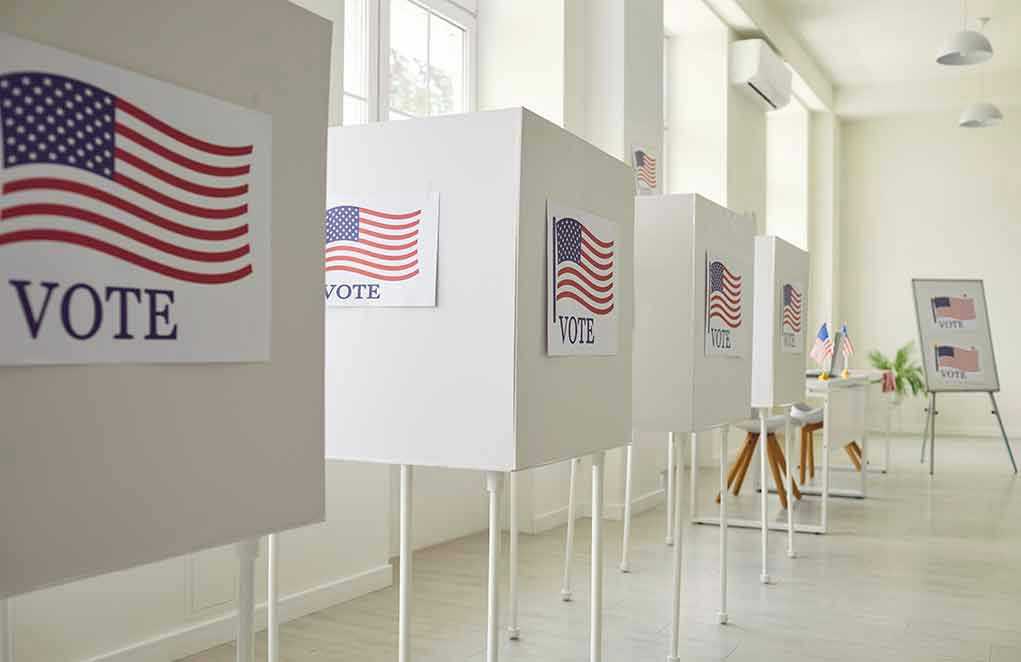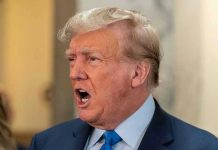
President Trump’s vow to end mail-in voting and clamp down on voting machines ahead of the 2026 midterms is igniting fierce debate over election integrity and executive power.
Story Snapshot
- Trump pledges a major executive order to eliminate mail-in voting and restrict voting machines before the 2026 midterms.
- Legal challenges and constitutional questions erupt as Trump’s order tests federal and state election authority boundaries.
- Civil rights groups and advocacy organizations quickly file lawsuits, while Trump supporters hail the move as vital for election integrity.
- The future of mail-in voting—and millions of voters who depend on it—hangs in the balance as the courts weigh in.
Trump’s Executive Order Targets Mail-In Voting and Federal Election Control
On March 25, 2025, President Donald Trump signed a sweeping executive order that directly targets federal election procedures. The order seeks to eliminate mail-in voting and imposes stricter documentary proof-of-citizenship requirements for voter registration in federal elections. Traditionally, the administration of elections and the authority to regulate voting methods have rested with individual states and Congress, not the executive branch. Trump’s move marks a dramatic expansion of presidential intervention in the electoral process, setting the stage for an unprecedented legal and political showdown.
Since his return to office, Trump has repeatedly argued that mail-in ballots and voting machines are susceptible to widespread fraud, despite courts and bipartisan officials finding no credible evidence to support these claims in previous election cycles. His August 18, 2025, announcement on social media—promising to lead a national movement against mail-in voting and to sign an executive order “bringing honesty” to the 2026 midterms—has rallied supporters who view election security as a foundational issue. However, the order’s reach into traditionally state-controlled election mechanisms has alarmed civil rights groups and legal experts, who warn of potential constitutional violations and voter disenfranchisement.
Constitutional and Legal Battles Erupt Over Executive Authority
The U.S. Constitution grants Congress and the states primary authority over federal election administration. Trump’s executive order attempts to centralize federal control, a move that immediately triggered lawsuits from organizations such as the ACLU and the League of Women Voters. These groups argue that the executive order oversteps presidential authority and could disenfranchise millions—including elderly, rural, and disabled voters who rely on mail-in options. Already, courts have blocked some provisions, notably those requiring documentary proof of citizenship, though legal challenges remain ongoing as the 2026 midterms approach. The outcome of these cases will likely determine the fate of mail-in voting for years to come.
Trump’s direct targeting of the Election Assistance Commission (EAC) and other federal agencies to enforce new voter registration rules has created tension between federal, state, and local officials. Many state election administrators have vowed to resist what they describe as federal overreach, further fueling questions about the balance of power within the American electoral system. With legal experts widely predicting that the Supreme Court will eventually intervene, the nation is bracing for a high-stakes constitutional test that could reshape future elections.
Stakeholders and the Broader Impact on U.S. Elections
Key stakeholders in this unfolding battle include President Trump, his administration, state election officials, civil rights organizations, and millions of American voters. Trump’s supporters argue the executive actions are essential for restoring faith in U.S. elections and preventing fraud—an issue that galvanized much of his political base after the 2020 election. Opponents, including advocacy groups and many legal scholars, warn that such actions threaten to erode fundamental voting rights and undermine democratic norms by sidelining established legislative and state powers.
The impact of these developments is already being felt: heightened political polarization, increased litigation costs, and uncertainty for voters. Vulnerable populations who rely on mail-in voting—such as seniors, military personnel, and rural citizens—face potential disenfranchisement if the executive order is upheld. Meanwhile, election technology vendors and nonprofit advocacy organizations are mobilizing resources for legal challenges and public education campaigns, underscoring the far-reaching consequences of Trump’s order for the entire election ecosystem.
Expert Perspectives on Election Security and Democracy
Election law scholars and security experts have consistently found no credible evidence to support claims of widespread fraud or systemic failure in mail-in voting and voting machines. Nonetheless, Trump’s insistence on these narratives continues to shape public debate and policy. Experts caution that undermining well-established election procedures risks damaging voter confidence and the legitimacy of the democratic process. As the legal battle escalates, the Supreme Court’s eventual ruling will be pivotal—either reinforcing constitutional limits on executive authority or granting new latitude to the presidency in election administration.
Trump Vows to Lead Movement Ending Mail-In Voting https://t.co/uhKnztKC79
— CallieBenson (@CallieforTrump) August 18, 2025
With less than a year before the 2026 midterms, the stakes for American democracy could not be higher. The outcome will determine not only how millions cast their ballots but also whether the nation’s foundational principles of checks and balances and state-led election administration remain intact. As both sides prepare for an intense legal and political fight, the future of mail-in voting—and the broader integrity of U.S. elections—remains uncertain.
Sources:
ACLU, League of Women Voters Education Fund v. Trump
Bloomberg Government, “Trump Floats Order to End Mail-In Ballots, Voting Machines”
ABC News, “Trump says he will lead ‘movement’ to end mail-in voting”

















